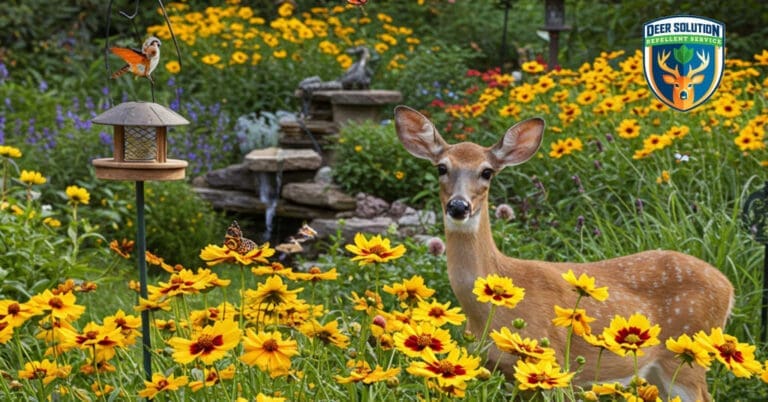Prairie Coreopses are beloved for their golden-yellow blooms and their role in supporting pollinators, but many gardeners face a crucial question: Do deer eat Prairie Coreopses? Understanding the traits of this plant and learning strategies to protect it can help you enjoy a thriving, deer-resistant garden.
Why Deer Might Avoid Prairie Coreopses
Prairie Coreopses (Coreopsis palmata) are known for their resilience, thanks to certain features that make them less appealing to deer:
- Texture: The coarse, somewhat tough leaves discourage browsing, as deer typically prefer tender foliage.
- Aroma: Prairie Coreopses emit a mild scent that doesn’t attract deer compared to more fragrant plants.
- Taste: These plants contain compounds that are unpalatable to deer, reducing the likelihood of significant browsing.
However, it’s essential to remember that deer feeding habits can vary, especially when other food sources are scarce.
The Reality of Deer Resistance
Despite their reputation for resilience, no plant is entirely deer-proof. During food shortages or harsh winters, deer may browse Prairie Coreopses out of necessity. Gardeners in areas with high deer pressure report occasional nibbling, particularly on young, tender plants.
To enhance your garden’s overall resistance, consider pairing Prairie Coreopses with other deer-resistant plants like Lavender, Sage, or Black-Eyed Susans. These combinations create a natural defense while adding beauty to your landscape.
When Are Prairie Coreopses at Greatest Risk?
Deer interactions with Prairie Coreopses often depend on the season:
- Spring: New growth is tender and more attractive to deer, making it a vulnerable period.
- Summer: Mature plants are generally less appealing as alternative food sources are plentiful.
- Fall and Winter: Limited vegetation may lead deer to browse even less-preferred plants like Prairie Coreopses.
Seasonal awareness can help you implement timely protective measures, such as using repellents or barriers during high-risk periods.
Strategies to Protect Prairie Coreopses
To ensure your Prairie Coreopses thrive while minimizing deer damage, follow these strategies:
- Companion Planting: Surround Prairie Coreopses with plants known for their strong scents or textures, like Yarrow or Catmint, to deter deer naturally.
- Strategic Placement: Position Prairie Coreopses near human activity zones, such as pathways or patios, to discourage deer from venturing too close.
- Diverse Plantings: Incorporate plants with varying textures, heights, and scents to confuse and repel deer.
- Natural Repellents: Apply eco-friendly sprays to create an additional barrier against deer browsing.
Balancing Beauty with Deer Management
Prairie Coreopses do more than enhance garden aesthetics—they play a vital role in supporting biodiversity. Their blooms attract pollinators like bees and butterflies, contributing to a healthy ecosystem. By incorporating these plants into your landscape and employing thoughtful protection strategies, you can enjoy a harmonious balance between garden beauty and wildlife coexistence.
If you’re looking for additional help managing deer in your garden, Deer Solution offers expert, eco-friendly deer management services. Our tailored solutions protect your landscape while maintaining environmental harmony, helping you create a sustainable and flourishing garden.
With proper planning and care, Prairie Coreopses can remain a vibrant feature in your yard, providing both beauty and ecological benefits while resisting unwanted deer browsing.








